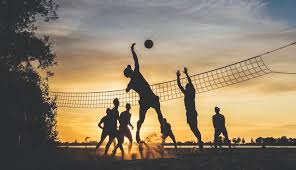
Team Dynamics and Sports Analysis: Maximizing Cohesion
Sports analysis is an essential part of sports coaching and sports management. The analysis process gathers an immense amount of data from every sporting event, and the successful interpretation of this data can provide insights on how to improve performance, create effective training sessions, and assess the strengths and weaknesses of a team. In this ultimate guide, we will discuss some of the techniques and strategies that can be used in sports analysis.
1. Data Analysis: The first and most crucial step in sports analysis is data collection. Data collection is done in real-time through various technological tools, such as high-resolution cameras, GPS trackers, and sensors. The data is then analyzed using advanced software to provides valuable insight into the performance of the players. The data is presented in graphical formats, which helps in identifying patterns and trends in the performance of players and teams.
2. Technical analysis: Technical analysis is a detailed analysis of every action that the players perform on the field. It involves an investigation into specific technical aspects, such as movement pattern, speed, power, agility, and endurance. Technical analysis helps coaches determine which areas need improvement and which areas are already strong. With the help of technical analysis, coaches can work on specific areas of a player’s performance and maximize their performance.
3. Tactical Analysis: Tactical analysis focuses on the strategic aspects of the game, such as how the team is set up, how the players are positioned on the field, and the selection of playing style. Tactical analysis involves analyzing the behavior of the players, their decision-making skills, and their overall game-play. The insights obtained from this analysis can help coaches create game plans and strategies that they can use to outplay their opponents in critical moments.
4. Statistical Analysis: Statistical analysis involves examining statistical data such as pass completion rates, shots on target, conversion rates, and other metrics. These figures help to monitor the performance of individual players and the team overall. With the help of statistical analysis, coaches and sports management can identify trends in performance, assess which areas need improvement, and track progress over time.
5. Video analysis: Video analysis is the process of capturing the video of particular segments of the game and reviewing it to analyze the performance of the players. With the help of video analysis, coaches can provide feedback to players, show them their strengths and weaknesses, and help them make improvements. The video analysis also helps the team to identify areas they need to work on and understand the strengths of their opponents.
Conclusion:
Scammer site search (먹튀사이트 조회) Sports analysis is a critical component in the world of sports. It provides a more in-depth understanding of players, teams, and opponents. Data collection and analysis, technical analysis, tactical analysis, statistical analysis, and video analysis are all essential tools needed to analyze and improve the performance of players and teams. With a better understanding of these techniques and strategies, coaches, and sports management can develop successful strategies for their players and improve the overall performance of their teams.